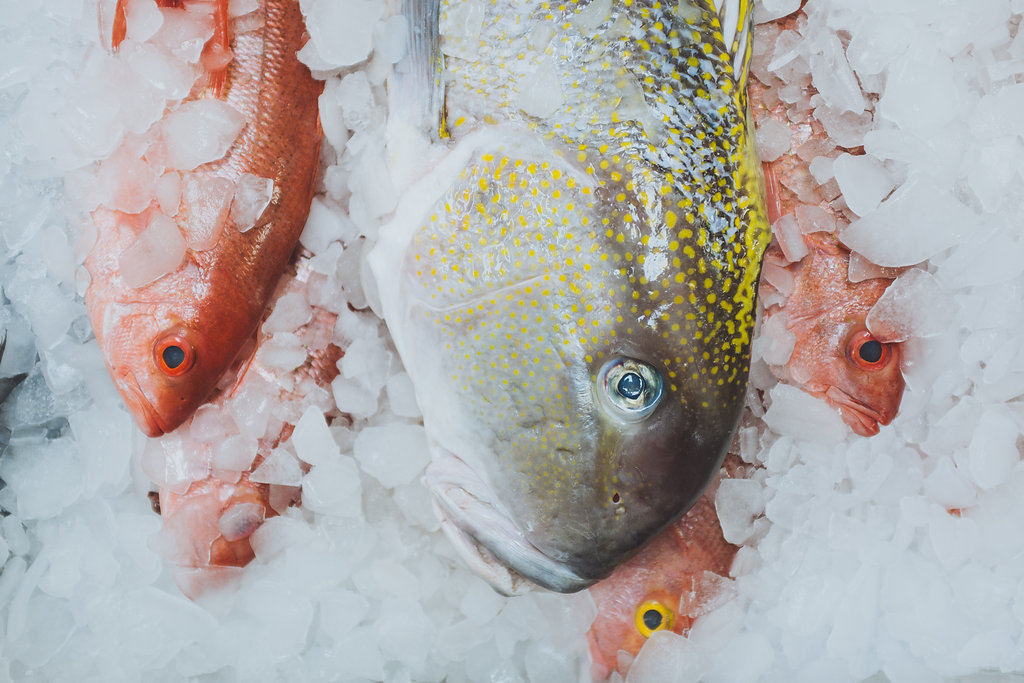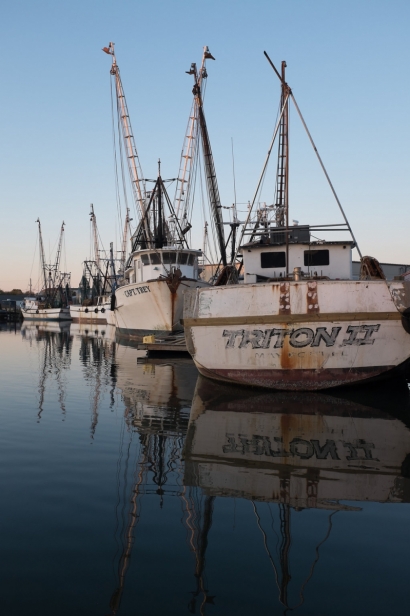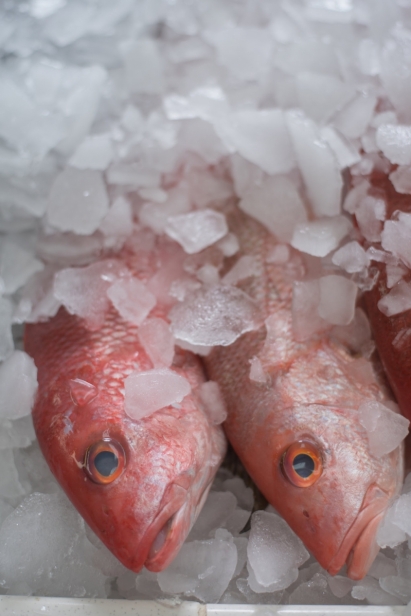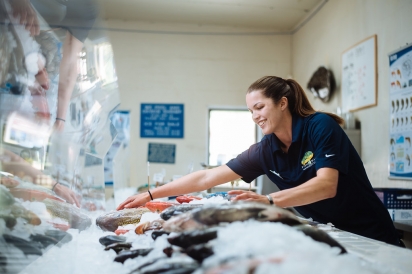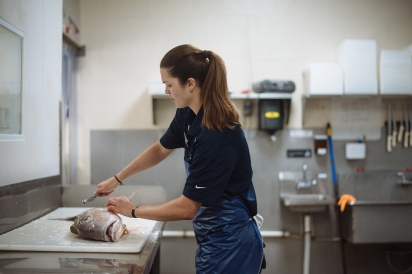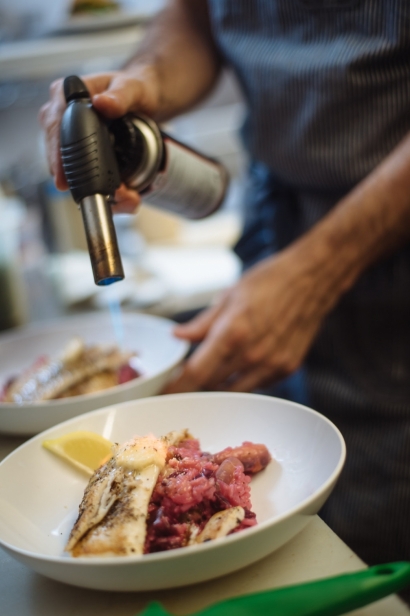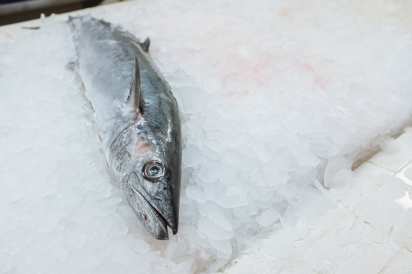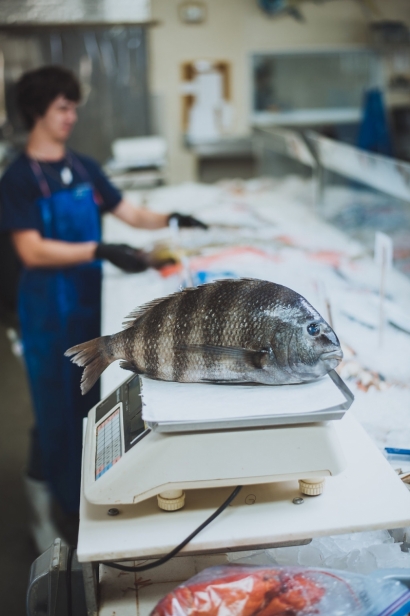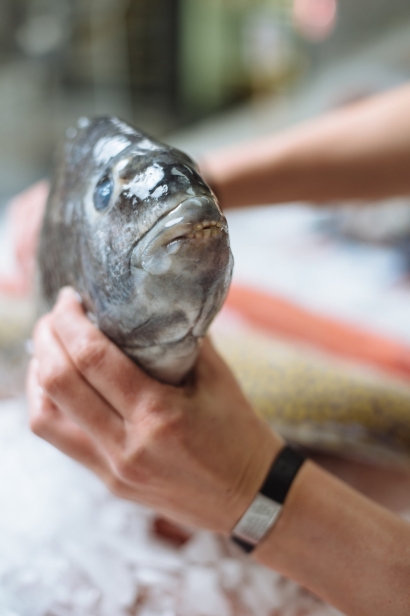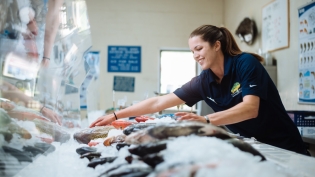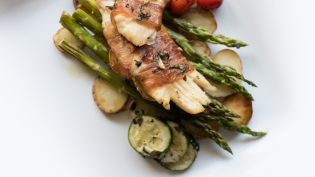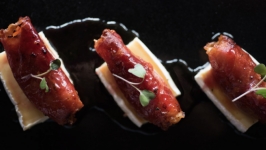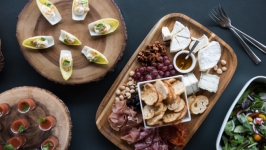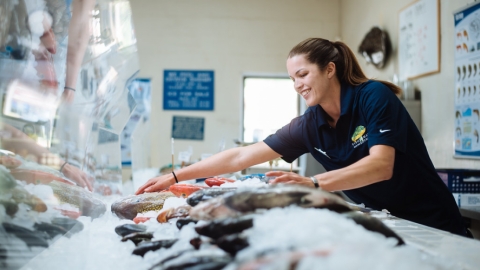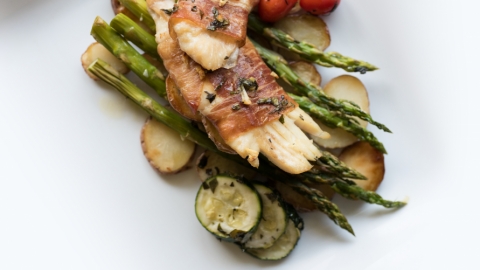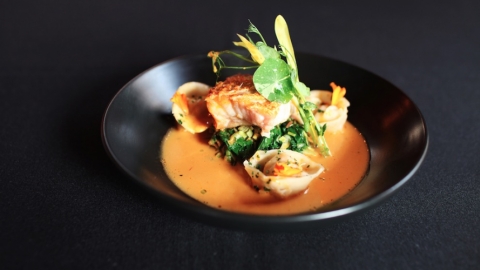Casting a Wider Net
The menu at Catch 27, a local-foods-focused eatery in St. Augustine, ebbs and flows according to what the local fishmonger retrieves off the boats that troll through Northeast Florida’s waters. Sure, the ubiquitous fresh flounder and Florida shrimp make regular appearances on the menu. But restaurateur Stephen Hutson is passionate about also serving up the area’s more obscure native species caught by locals on small boats: sheepshead, hogfish, black drum, African pompano and amberjack, to name a few.
Diners may tip their heads to the side with curiosity when the server tells them about the blackened triggerfish with sherry cream sauce, grilled vermilion snapper with local vegetable risotto and lemon compound butter or golden tilefish and saffron rice.
“I think the general public expects to see fish like salmon, tilapia and flounder because they’re more familiar with them,” Hutson says. “But once we educate our diners about our local fish, they are a lot more open to trying a new dish.”
Hutson is among a cadre of indie restaurant owners, chefs and fishmongers who are encouraging the consumption of underutilized Florida coastal fish — those incidental varieties accidentally caught by fishermen — and other underappreciated native or invasive species.
Eating what is local, available and in season has significant environmental and economic benefits. It balances the stock levels of all species and prevents overfishing. Consuming local fish also supports community fishermen and fish market purveyors. Plus, our local species have distinct, delicious flavor profiles that too often are overlooked in the mainstream dining realm.
“Most of the fish from Northeast Florida waters are a variant of a mild white,” Hutson says. “The locals refer to triggerfish as the poor man’s lobster because it has this sweet, buttery flavor. It’s one of my favorites.”
Just don’t mischaracterize these lesser-known species as “trash fish,” a term used loosely that refers to unintended catches, bottom feeders and other non-mainstream species. That label devalues the integrity of these species’ role in the eco-system and potential in the kitchen, those in the seafood industry say.
More than 200 native species of freshwater fish inhabit Florida’s waters, with most found in Northeast Florida. Recreational anglers focus on about 35 species. The Florida Fish and Wildlife Conservation Commission manages more than 500 saltwater species, but only about 55 varieties are caught commercially as food fish or bait. Many species are not heavily targeted by recreational anglers or commercial fishermen, according to the agency.
Those in local seafood circles suggest that the general public is skittish about wading into unfamiliar territory when it comes to trying local fish for a couple of reasons. One is the perception that it doesn’t taste good. It’s the same unease that causes many to refrain from trying underused parts of an animal, like oxtails or pig jowls, even though our grandparents and great-grandparents utilized all parts of an animal to prevent food waste.
North Atlantic swordfish, for one, has fallen off the radar. The species was a dining favorite until the 1990s, when overfishing led to its population only reaching 58% of its target level. Now, according to the National Oceanic and Atmospheric Administration, this species is one of the greatest success stories of the U.S. and international fisheries management, thanks to a sweeping plan to rebuild stock to full levels.
Unfortunately, locally caught swordfish represents only 2% of sales at C&C Fishery in Atlantic Beach.
“I think it comes down to perception,” says Atillio Cerqueira, owner of C&C Fishery. “Chefs quit buying these fishes in the ’80s and ’90s because they didn’t want to contribute to the problem. I think there’s still a hangover from that time period. It has nothing to do with flavor profile—they’re delicious.”
THE SLOW FISH MOVEMENT
Ben Williams, former owner of Fisherman’s Dock in Mandarin and longtime fishmonger, supervises the influx of locally harvested species making their way into the display in the center of this retail fish market. He examines the rows of whole fish in various shades of gray, fanned out across a bed of ice chunks. He points to a half-dozen or so that stand out because of their blush hue.
He pulls one out and brushes his hand across its sharp scales. Williams explains that most fishermen on snapper boats accidentally catch this squirrelfish on a hook and line and throw it back into the waters.
“It used to be that fishermen would hardly keep squirrelfish at all. They don’t like to handle them,” he says. They’re relatively small—only a half-pound to three-quarters of a pound—and not ideal for fileting.
“But anyone who likes to cook whole fish should pounce on them,” Williams says. “Its meat is light and tastes like snapper, it’s that good.”
Squirrelfish is making a comeback, slowly.
“Now there’s a small market for them,” Williams says.
He explains that he’s been working extensively with chefs during the last six or seven years to integrate these and other regional species into their local food sourcing routines.
Golden tilefish represents one example of a strategic conservation recovery effort and successful foray onto the plates of open-minded diners.
“Eight or 10 years ago, the seasons were smaller and closures were significant,” he says. “But quotas have been increasing over the last four years. More restaurants are serving it. Golden tile, if you ask me, tastes better than grouper, and you can enjoy it when grouper season is closed. There are a lot of restaurants here selling it.”
Endorsements aren’t unique to native species either. The Florida Fish and Wildlife Conservation Commission as well as environmental activists are encouraging the capture of invasive species such as the rapidly populating lionfish, which according to the agency has the potential to significantly alter the population dynamics of native marine species. These interlopers are relatively easy to capture but usually are only intentionally targeted by divers who use dip nets or spears.
And there’s work involved. The venomous spines must be extracted. But to chef Mike Riska at North Beach Fish Camp, which occasionally features the fish as a chef’s special, the tasty payoff is worth the effort.
"Lionfish is a super flaky, rich white fish,” Riska says. “We fry the whole fish, and finish it off with an adobo seasoning and a smoked orange and jalapeño marmalade on top. It’s incredible.”
To a certain extent, chefs and restaurateurs — particularly at chains that have to meet bulk food purchasing demand — are feeding the general public’s deference to the common seafood species, some of which are the least sustainable choices because they are being overfished in seas abroad with little regulation, says Kathy Collins, former executive chef at NOLA MOCA.
“Frozen grouper and snapper are available all the time,” she says. “I’d rather serve what’s local and in season. I’d rather my fish be fresh and run out, than serve something frozen.”
Further north in Fernandina Beach, close to where the St. Marys River snakes into the ocean, Gilbert’s Underground Kitchen regularly adjusts its menu according to the seasonal availability of ingredients from the surrounding land and sea. Early morning phone calls from Fisherman’s Dock alert Gilbert of its freshest local harvests.
“They’ll call and say, ‘Hey, we got some sheepshead or triggerfish in today. Do you want it?’” chef Kenny Gilbert says. “I’ll say yes. We also get catfish from St. Johns River. I serve it on grits with a sweet potato chow chow. It’s really craveable.”
Longtime locals flock to Gilbert’s for his saltwater mullet, a species that harkens back to his fishing days with his grandmother off the coast in St. Augustine.
“I’ve always embraced my heritage, and that is what mullet is to me,” he says. “It’s a stubborn fish to catch, and it takes time to clean. But the locals are impressed that we’re bringing back to life something truly historic.”


